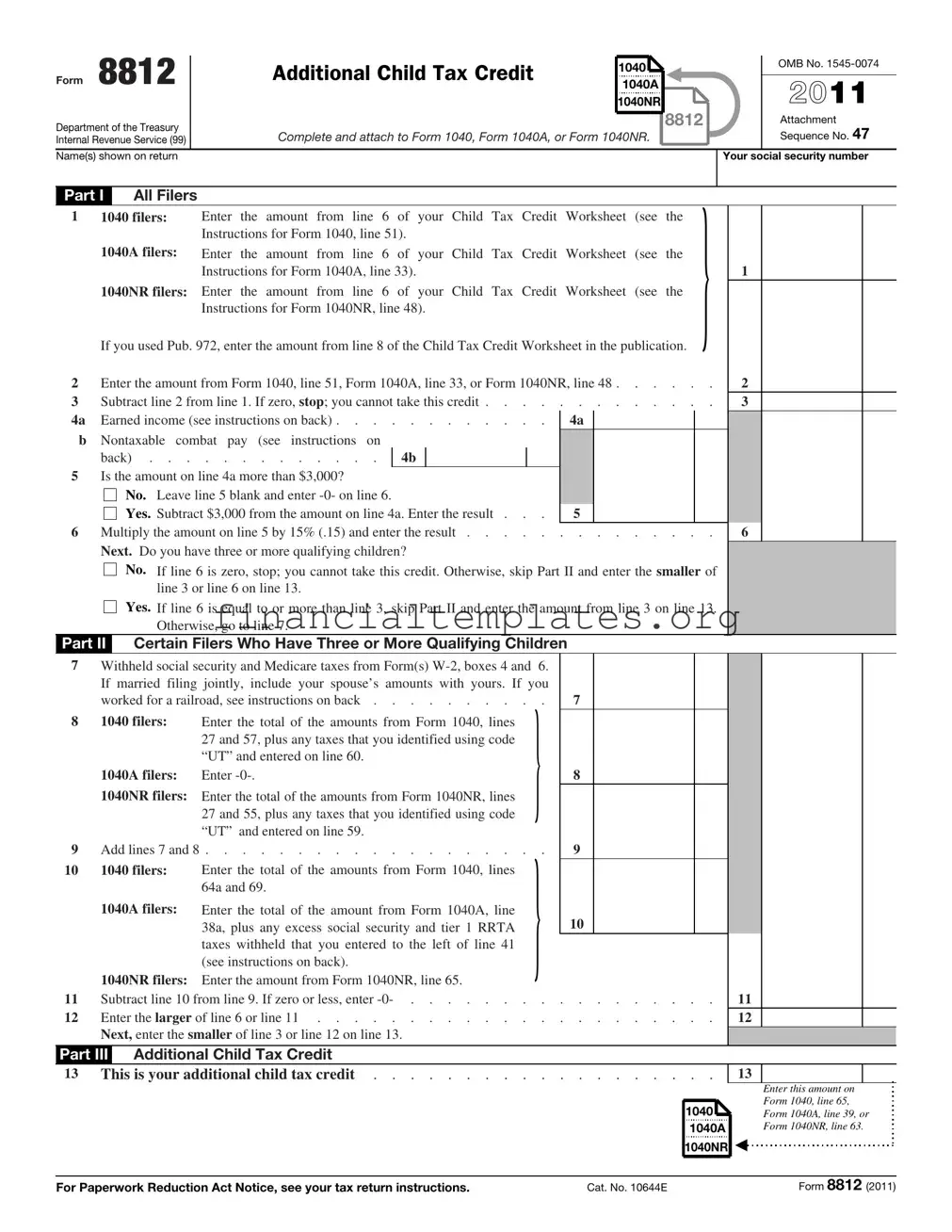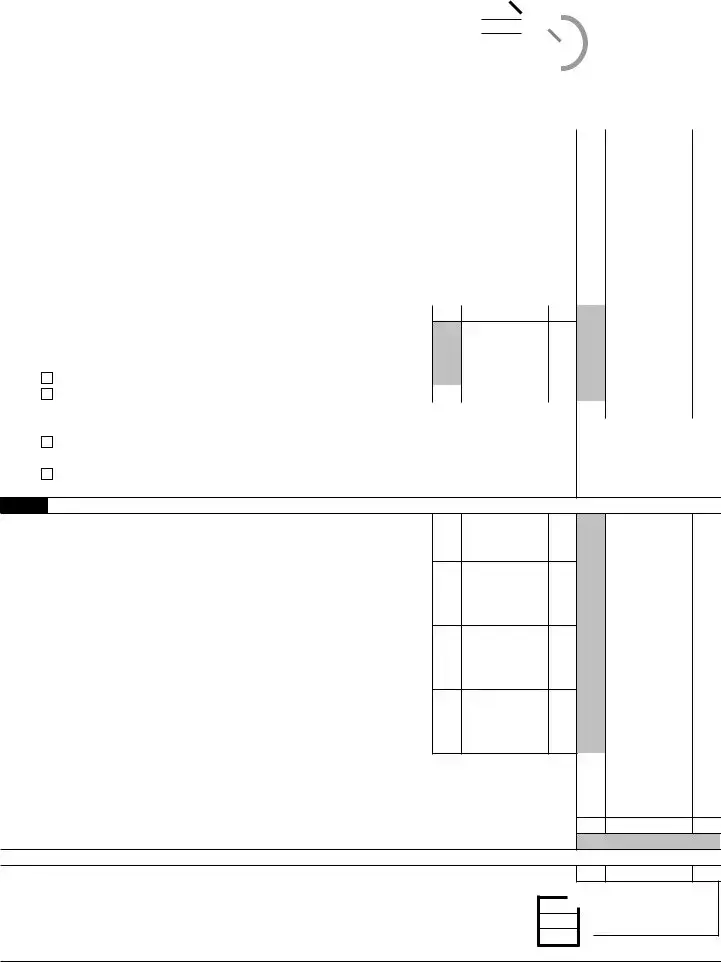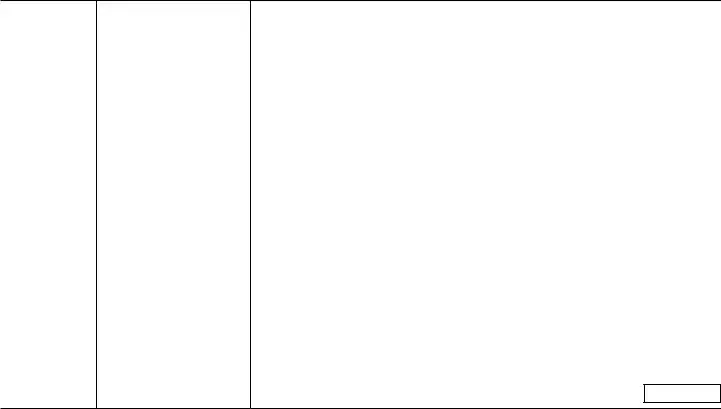The IRS Form 1040 is a foundational document for personal tax filing in the United States, similar in many ways to the IRS Form 8812. The Form 1040 serves as a taxpayer's main vehicle for annual income reporting, tax calculation, and determination of taxes owed or refund due. Similar to how the Form 8812 allows taxpayers to calculate and claim the Additional Child Tax Credit, the Form 1040 includes various sections for reporting income, tax deductions, and credits, directly impacting the taxpayer's financial obligations to the government.
Form W-2, the Wage and Tax Statement, parallels the IRS Form 8812 in its role of facilitating tax credit calculations. Specifically, information from the Form W-2, such as wages earned and federal income tax withheld, is crucial for accurately completing Form 8812, especially when calculating the Earned Income on Part I or adjusting income levels to qualify for the Additional Child Tax Credit. The interdependence of these forms highlights the cohesive nature of tax documentation, ensuring individuals claim all applicable benefits.
IRS Form 1040A, also known as the "Short Form," shares similarities with Form 8812, as it was a simplified version of the more comprehensive Form 1040. Before its retirement in 2018, Form 1040A facilitated a quicker filing process for those with straightforward tax situations, offering specific credits including adjustments for child tax credit, akin to what Form 8812 provides through its detailed computation for the Additional Child Tax Credit. Both forms streamlined the tax filing process by catering to common taxpayer needs, simplifying the way individuals account for dependents and family-related tax relief.
Form 1040NR, designed for nonresident aliens to file U.S. taxes, aligns with Form 8812 in its specialized approach to tax compliance. Form 1040NR participants, like those using Form 8812, navigate specific instructions tailored to their unique filing status and eligibility criteria, particularly in how nonresident aliens address U.S.-sourced income and claim benefits like the Additional Child Tax Credit if applicable. Both forms exemplify the IRS’s commitment to accommodating the diverse fiscal profiles within the U.S. taxpaying population.
Form 8863, Education Credits (American Opportunity and Lifetime Learning Credits), mirrors the purpose of Form 8812 in providing taxpayers with avenues to reduce their tax liabilities through specific credits. Where Form 8812 focuses on providing relief to those with qualifying children, Form 8863 aims at taxpayers looking to offset education expenses. Both documents enhance the accessibility of tax benefits tailored to personal or family investment in future growth, be it through nurturing a child or pursuing higher education.
The Schedule EIC, Earned Income Credit, is closely related to IRS Form 8812 in its focus on supporting low-to-moderate-income working families. Just as Form 8812 facilitates claiming the Additional Child Tax Credit, Schedule EIC is utilized to calculate and claim the Earned Income Credit. These forms are pivotal for households aiming to maximize their tax refunds and effectively reduce their overall tax burden, showcasing the tax code's accommodation for various taxpayer needs.
Form 2441, Child and Dependent Care Expenses, is another document that shares a functional resemblance to Form 8812. It targets taxpayers who incur expenses for child or dependent care, allowing them to claim a credit that reduces their tax liability, much like the Additional Child Tax Credit. The coordination between these forms underscores a multi-faceted approach to supporting American families through tax incentives for essential care services.
IRS Publication 972, Child Tax Credit, serves as a comprehensive guide similar to Form 8812, offering detailed information for taxpayers on qualifying and claiming the Child Tax Credit. While Form 8812 is a tool for actual calculation and filing, Publication 972 provides the essential knowledge foundation that informs the use of Form 8812, ensuring taxpayers are well-equipped to secure all credits for which they are eligible.
Lastly, Form W-4, Employee's Withholding Certificate, indirectly connects with Form 8812 through the payroll withholding process. Taxpayers can adjust their withholding rates based on anticipated tax credits, including the Additional Child Tax Credit calculated on Form 8812. This proactive strategy allows individuals to manage their take-home pay and potential tax refunds more effectively, illustrating the interconnected nature of tax forms and personal financial planning.



